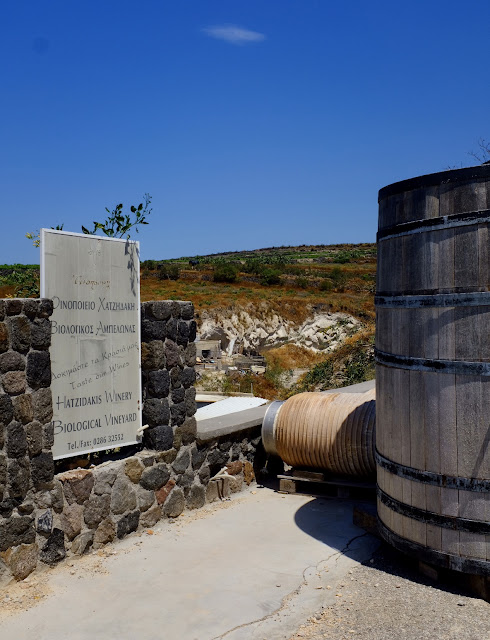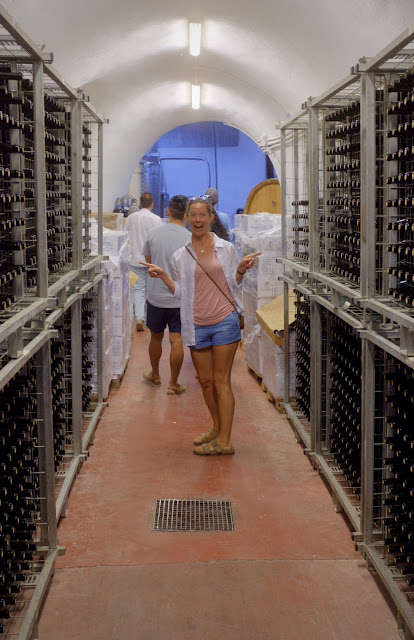Greece 2022 - Day 18: Sipping Santorini
Today, we were scheduled for a wine tasting tour and cooking
class. We were picked up a short
distance from our hotel at around 10am, joining two other couples in the small
group excursion. Our tour guide, Yiannis,
was delightful and very knowledgeable about the cultivation wines of Santorini,
a practice that has been carried out on the island for nearly 3500 years. Our first stop was a small, private vineyard
where we learned how grapes are grown on the Island. Unlike traditional vineyards in most other parts
of the world where the grapes are grown in neat rows with the support of a wire
trellis, grape vines on Santorini are trained to grow very low to the ground in
a unique basket-like system known as koulara. The island is subject to strong winds coming
off the sea which can damage the vines and grapes if they are not trained to
grow low to the ground in this way. As
the vines grow, they are woven into rings or “baskets” with the grapes facing
towards the center of the ring. The
vines leaves and the woody vine itself provide protection for the grapes from the harsh
wind and intense sunlight.
The koulares are usually grown haphazardly on small plots of land and can easily be mistaken for wild bushes by people not familiar with this practice. Santorini is the only place in the world where grapes are grown this way. Typically, the vineyards are not irrigated, so the vines do not receive any water other than what they are able to soak up from humidity in the air and from morning dew.
Our first wine tasting stop was at a family-owned vineyard called Hatzidakis where we sampled 6 different wines, learning about each one as we sipped away. The wines of Santorini are most commonly white, with only a few red or rose types produced, and they are known for their high acidity, intense minerality and citrus flavors which are key elements of the Assyrtiko variety that dominates most of the vineyards on the island.
Our next stop was Santo Wines, the largest winery on Santorini. Here we sampled a large variety of wines paired with meats, cheeses and dried fruits. The star of this tasting was the famed Vinsanto wine, a type of wine made from dried grapes. Although this method of winemaking is not unique to Santorini, the Vinsanto of the Island is considered one of the best in the world due to the unique taste that develops from the combination of the climate, the volcanic soil and the age-old vines grown in kouloures.
Our last stop was Anhydrous winery where we continued tasting wine while participating in a cooking class. We learned how to make traditional Santorinian tomato fritters, or Domatokeftedes, as well as Greek salad and Minoan pork stew with Greek Fava, a yellow split pea puree.
At the end of the cooking class, we sat down and enjoyed a family-style
meal, sampling all of the dishes we had learned about. Of course, there was more wine!
Despite not being able to get deeply involved in the cooking process, we still had a great day with a really fun group of people.
We were returned to our original meeting place from this
morning around 6:30pm. From there we
took a short walk to check out the famed Three Bells of Fira, the most iconic, and most photographed church on the island of Santorini.
After drinking wine and eating seemingly non-stop for nearly 6 hours, we were essentially done for the day. We spent the rest of the evening relaxing on the terrace and watching yet another spectacular sunset.

































Comments
Post a Comment